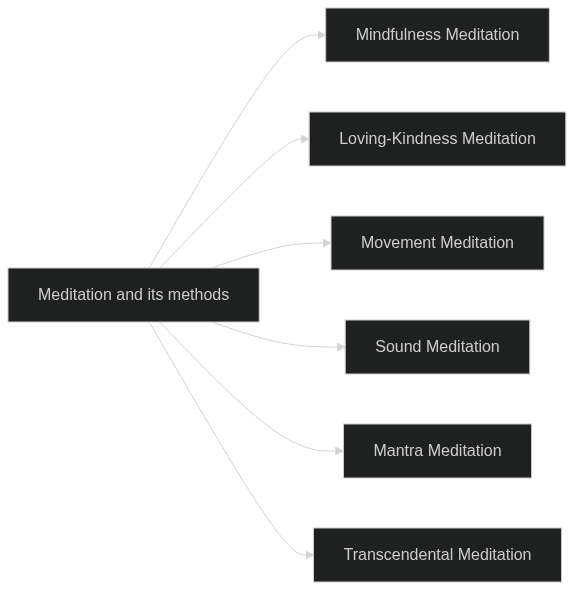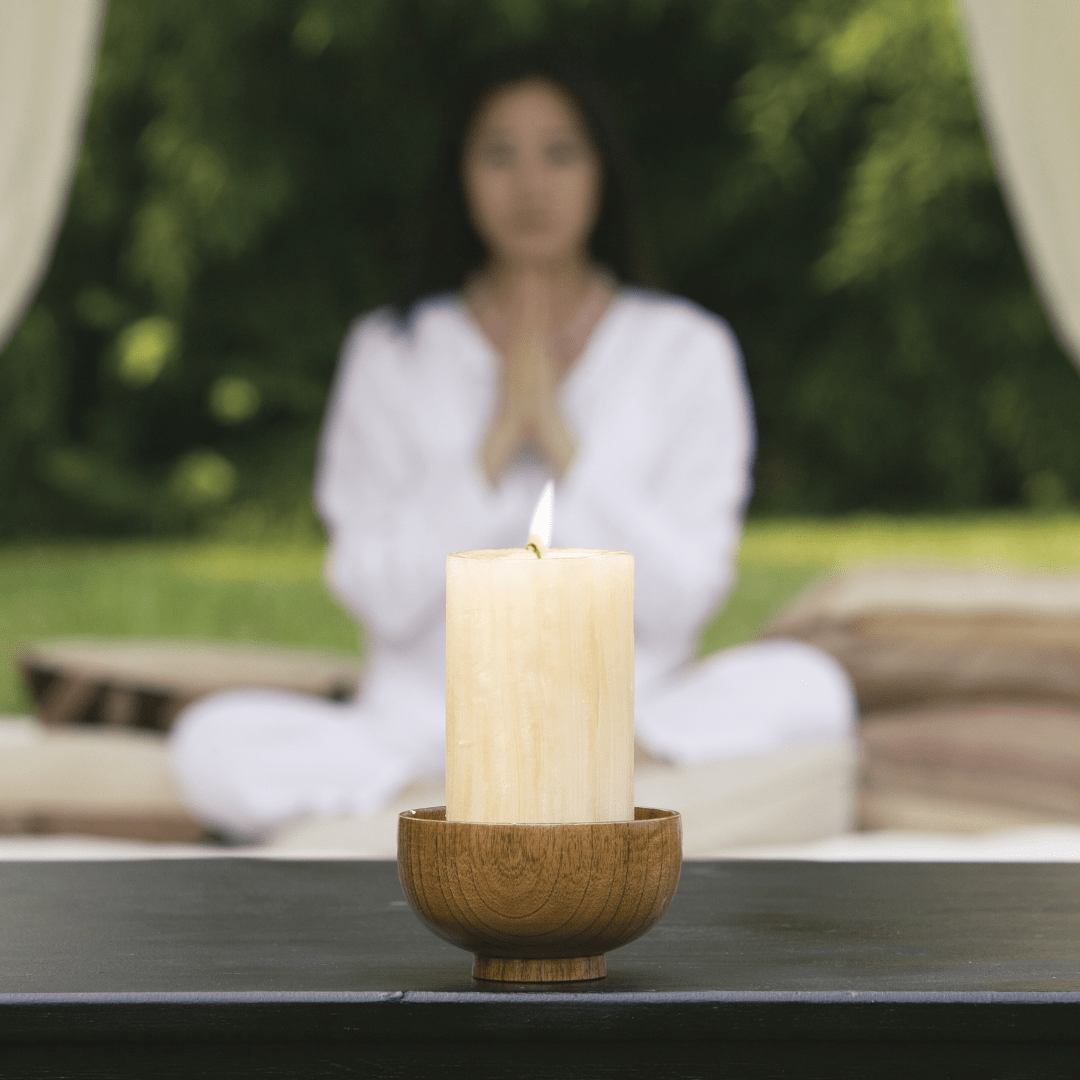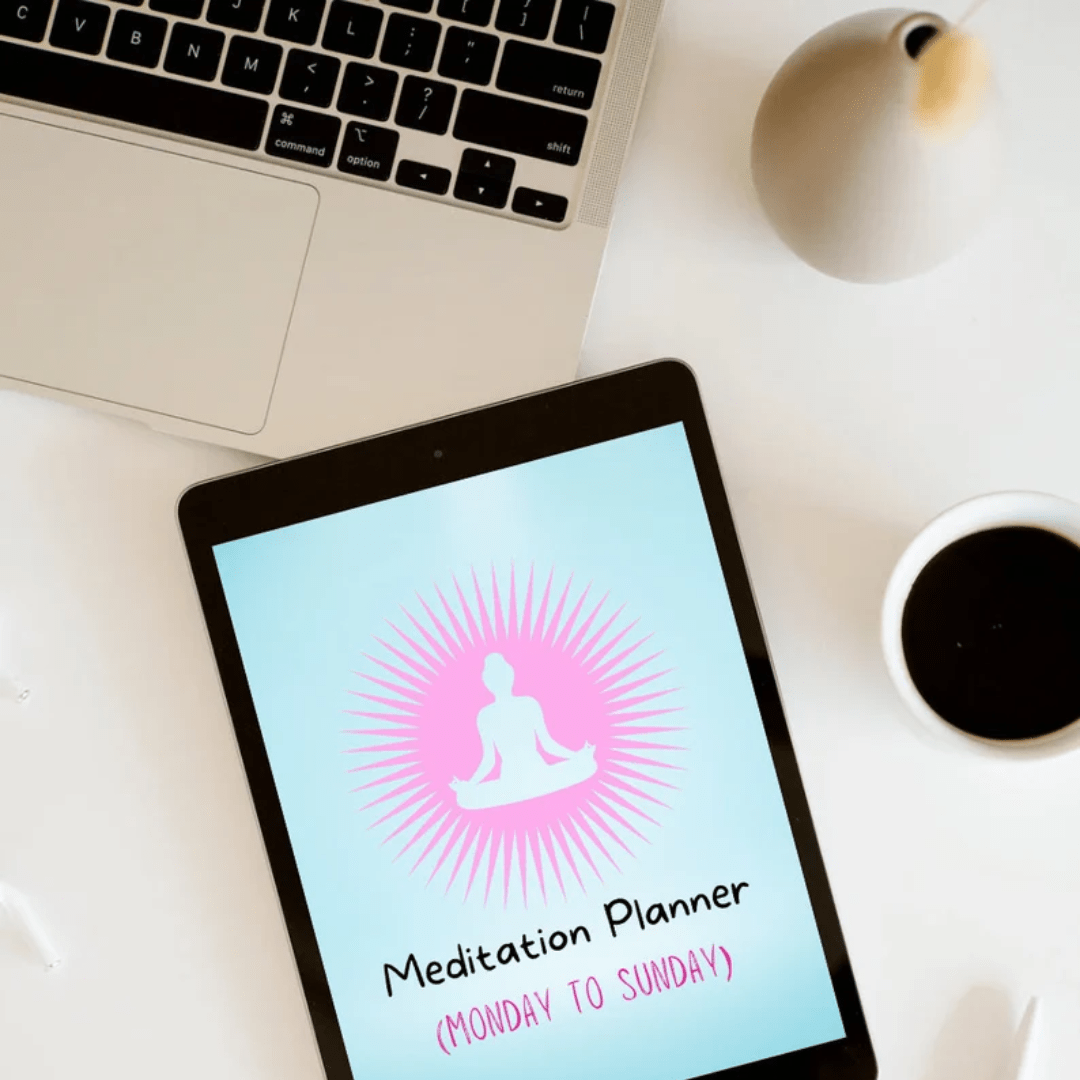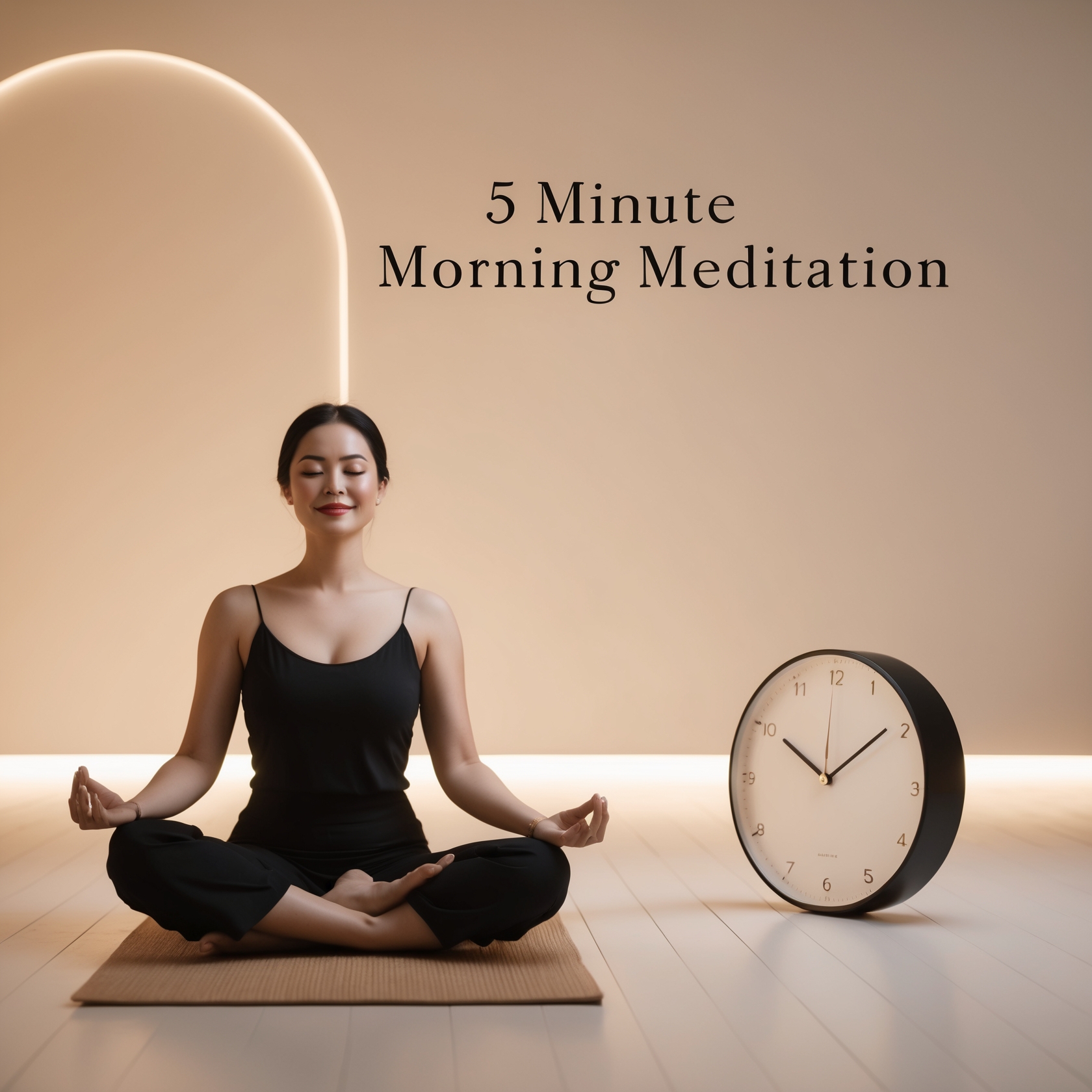Meditation is an ancient practice that has become increasingly popular in recent years. It has many benefits, including reducing stress and improving mental clarity and overall well-being. While there are many different types of meditation, all have the same end goal – to help one achieve inner peace and a sense of balance. Here’s a comprehensive guide to meditation and its methods and how it can help create better physical, mental, and emotional health.
Introduction to Meditation and Its Benefits
Meditation is an age-old practice and its method has been used for centuries to promote peace, clarity and well-being. It is a simple yet powerful tool that can be used to make positive changes in your life by helping you to relax and focus on the present moment. In this article, we will discuss the basics of meditation and its methods and how it can help you achieve physical and mental balance.
Meditation involves focusing your attention on a particular thought or activity while calming your body and mind with deep breaths. This allows for greater clarity as well as relaxation from everyday stressors. With regular practice, people often experience improved sleep quality, enhanced concentration, reduced anxiety levels and better overall moods. Meditation and its methods also help increase mindfulness which encourages people to pay more attention to their thoughts and feelings so they can respond more positively in challenging situations.
What is Meditation and Why are its methods Important?
Meditation is a practice used to focus one’s mind and energy on a particular thought, object, or activity. Meditation and its methods have been practiced for centuries in many cultures as a way of achieving spiritual enlightenment and inner peace. In recent years, meditation and its methods have become increasingly popular in modern society as a way to reduce stress, improve physical and mental health, and achieve greater overall well-being.
The act of meditating involves finding a comfortable posture and then focusing attention on an object (such as the breath) or mantra that is repeated silently over and over again. This helps to block out distractions from external sources such as noise or thoughts which can lead to feelings of restlessness or anxiety. Regular practice, it can aid in developing greater self-discipline, concentration skills, clarity of thought process and improved intuition.
The Benefits of Meditation Methods for the Mind and Body
Meditation is an ancient practice and its methods are used by people the world over to relax and center the mind. It has been practiced for centuries and its benefits are still being discovered today. There are a number of benefits that come from regular meditation, both for our mental and physical health. Not only can it help us to control our emotions, but also improve concentration levels and even reduce pain.
Meditating helps us to become more aware of our thoughts and feelings, allowing us to gain better control over them. This can be beneficial in helping us deal with stress or negative emotions in a healthier way than we would otherwise do. Research has shown that regular meditators tend to be less anxious, have improved focus, increased self-awareness and experience greater emotional stability overall. It can also help improve sleep quality, and energy levels throughout the day as well as increase creativity.

Understanding the Different Types of Meditation
Meditation is a practice that has been used for centuries to help people reconnect with their inner selves, reduce stress and anxiety, and live more peacefully. But did you know there are actually different types of meditation? It can be helpful to better understand the various styles of meditation and their methods as they all have different goals and purposes.
The first type of meditation is mindfulness-based meditation which focuses on being mindful or aware of the present moment without judgment or attachment. This type of meditation encourages practitioners to observe their thoughts without getting attached or trying to change them in any way. The second type is mantra-based meditation which involves repeating a sound, phrase or word over and over again. This helps the practitioner stay focused on the present moment while also allowing them to achieve a deep state of relaxation.
Mindfulness Meditation
Meditating with mindfulness has been around for centuries to help people find inner peace and happiness. Mindfulness meditation involves focusing your attention on the present moment, allowing thoughts, emotions and sensations to come and go without judgement. Through regular practice, mindfulness meditation can bring clarity to our thoughts and feelings, helping us develop insight into our patterns of thinking and behaviour.
The benefits of mindfulness meditation are numerous; it can help reduce stress, relieve anxiety, improve sleep quality, increase focus and concentration, lower blood pressure as well as create a sense of calmness in everyday life. Studies have shown that even brief sessions of mindfulness meditation and its methods can result in significant improvements in overall mental well-being. It helps bring awareness to how we relate to ourselves and others around us.
Loving-Kindness Meditation
Loving-Kindness Meditation is an ancient practice that has been used to cultivate feelings of goodwill and kindness towards oneself and others. It is a powerful tool for healing, transformation, and cultivating compassion in our lives. The practice of Loving-Kindness Meditation can be used to strengthen relationships, reduce stress, and create a deeper sense of peace within the mind.
The Loving-Kindness Meditation consists of four steps: first, wishing yourself well; second, wishing well for a benefactor; third, extending wishes to neutral people; fourth, extending wishes to difficult people. This meditation begins with simple phrases like “May I be filled with loving-kindness” or “May I live with ease” while visualizing these positive statements being received by yourself or someone you care about.
Movement Meditation
Movement meditation is an increasingly popular form of meditation that combines both physical and mental aspects to gain a sense of peace and relaxation. It involves combining slow, controlled body movements with focused breathing and visualization techniques. Unlike traditional forms of mediation, movement mediation requires the practice of physical activity instead of sitting in one place. As the body moves from one position to another, practitioners can use this as an opportunity to connect with their emotions and focus on their breath.
The practice provides numerous benefits such as improved circulation, reduction in stress levels, enhanced energy flow throughout the body, increased flexibility and strength, enhanced concentration skills and better overall well-being. Not only does it help individuals become more aware of their inner emotions but also it helps them become conscious of how they move through space.
Sound Meditation
Meditation is a powerful way to reduce stress, build mindful awareness and increase inner peace. It can be done in many forms, but sound meditation is one of those methods which is the most popular technique used today. Sound meditation combines specific sounds and vibrations with guided imagery to help deepen one’s connection with the present moment.
During a sound meditation session, participants are guided through various breathing exercises and body scans while listening to soothing music or sounds such as Tibetan singing bowls, chimes or gongs. This combination of breath work and audio stimulation encourages a deepened connection with oneself as well as heightened feelings of relaxation. With regular practice, sound meditation can help bring clarity to thoughts while reducing tension and anxiety levels in the body. Additionally, it helps create more balance between mind, body and spirit for an overall sense of well-being.
Mantra Meditation
Mantra meditation is a powerful practice that has been used for years to help create inner peace and focus. It involves repeating a certain phrase or sound with the intention of calming the mind and body while allowing a spiritual connection. Through mantra meditation, one can learn to relax their body, still their mind and open their heart to experience greater well-being in all areas of life.
The use of a sacred sound or phrase helps to guide the practitioner into deeper states of relaxation as it focuses awareness on something outside oneself. These mantras can be anything from simple affirmations like “I am at peace” to traditional Vedic sounds such as “Om” or Sanskrit phrases like “Shanti” which means ‘peace’.
Transcendental Meditation
Transcendental Meditation is an ancient form of meditation practiced by millions of people around the world. Repeating silent mantras, promotes inner peace, relaxation, and stress relief for centuries. The goal of Transcendental Meditation is to reach a higher level of consciousness and develop a greater sense of self-awareness.
The technique involves sitting comfortably with eyes closed in a quiet place, repeating a personal mantra chosen by the meditator. This mantra can be any word or phrase that has a special meaning for the individual such as “peace” or “calmness”. Practicing Transcendental Meditation on a regular basis can reduce stress, improve concentration and increase feelings of well-being and happiness. People who practice it often report having more energy, improved sleep quality, better relationships and an overall feeling of being at peace with themselves and their lives.
The Science Behind Meditation and its Effects on the Brain
Meditation is a practice that has been around for thousands of years, but only recently has science begun to uncover its true potential. From reducing stress and anxiety to improving cognitive function and overall well-being, the benefits of meditation are numerous and well-documented. But how exactly does meditation work, and what is happening in the brain during a meditative state?
How Meditation Affects the Brain
The brain is a complex organ, and the mechanisms behind meditation are still not fully understood. However, research has shown that meditation can produce a number of changes in the brain, including increased activity in regions associated with attention and self-awareness, and decreased activity in the “default mode network,” which is responsible for self-referential thoughts and mind-wandering.
Additionally, meditation has been shown to increase the thickness of the prefrontal cortex, the part of the brain responsible for executive functions such as decision-making and attention. This increase in cortical thickness has been associated with improved cognitive function and better emotional regulation.
The Physical and Mental Benefits of Meditation
Numerous studies and scientific research support the benefits of meditation on physical and mental health. Some of the most notable benefits include:
Reduced Stress and Anxiety
Studies have shown that regular meditation can help reduce symptoms of anxiety and depression, as well as lower cortisol levels, the hormone associated with stress.
Improved Cognitive Function
As well as improving focus, attention, and memory, meditation also helps slow the deterioration of cognitive function with age.
Better Physical Health
Aside from improving mental health, meditation also lowers blood pressure, reduces chronic pain, and boosts the immune system.
Breathing Techniques for Meditation
Meditation is a simple yet powerful tool for reducing stress, improving mental health, and enhancing overall well-being. Incorporating breathing techniques into your meditation practice is one of the easiest and most effective ways to begin. By focusing on your breath, you can calm your mind, reduce stress, and improve mental clarity.
Why is Breathing Important for Meditation?
Breathing is a natural and automatic process, but it can also be consciously controlled. By paying attention to your breath during meditation, you can improve focus and concentration, and bring your mind into the present moment. This helps to reduce stress and anxiety, and improve mental clarity and well-being.
Different Breathing Techniques for Meditation
Each breathing technique has its own unique benefits when used in meditation. Here are a few of the most popular and effective techniques to try:
Abdominal Breathing
Abdominal breathing involves breathing deeply into the belly, allowing it to expand fully with each inhale. This type of breathing helps to calm the mind and reduce stress.
Square Breathing
Square breathing involves counting to four as you inhale, holding your breath for four counts, exhaling for four counts, and holding for four counts before starting the next inhale. This technique can help to improve focus and concentration.
Alternate Nostril Breathing
Alternate nostril breathing involves breathing deeply and alternately through one nostril and then the other. In addition to balancing the body’s energies, this technique reduces stress and improves mental clarity.
Body Scan Meditation: A Step-by-Step Guide
Meditation is a powerful tool for reducing stress, improving mental health, and enhancing overall well-being. Body scan meditation is one form of meditation that involves paying attention to sensations throughout the body, from the top of the head to the tips of the toes. This type of meditation can be especially effective for reducing stress and improving sleep quality.
What is Body Scan Meditation?
Body scan meditation is a type of mindfulness meditation that involves lying down or sitting comfortably and focusing your attention on different parts of the body. By focusing on each part of the body in turn, you can increase your awareness of sensations and reduce stress and anxiety.
How to Practice Body Scan Meditation
Here is a step-by-step guide to practicing body scan meditation:
- Make sure you’re in a quiet, comfortable place.
- Close your eyes and focus your attention on your breath. Take a few deep breaths, inhaling deeply and exhaling slowly.
- Begin to focus your attention on different parts of the body, starting with the top of your head and working your way down to the tips of your toes.
- As you focus on each part of the body, pay attention to any sensations or emotions that come up. This could be physical sensations like tingling, tightness, or warmth, or emotional sensations like calmness, discomfort, or restlessness.
- Continue focusing on each part of the body in turn, paying close attention to sensations and emotions. If your mind begins to wander, simply redirect your focus back to the breath and start again with the next part of the body.
- When you have completed the body scan, take a few deep breaths and slowly open your eyes.
- Take a moment to reflect on your experience. What did you notice? Were there any parts of the body that were especially tense or relaxed? What emotions came up during the practice?
Loving-Kindness Meditation: A Practice of Compassion
Loving-kindness meditation is a powerful form of meditation that involves focusing your attention on feelings of love and compassion. By cultivating these positive emotions, you can improve your well-being, reduce stress, and deepen your relationships with others.
The Purpose of Loving-Kindness Meditation
The purpose of loving-kindness meditation is to cultivate feelings of love, kindness, and compassion towards yourself and others. This type of meditation is based on the idea that by focusing on positive emotions, you can increase your overall well-being and reduce stress and anxiety.
How to Practice Loving-Kindness Meditation
Here is a step-by-step guide to practicing loving-kindness meditation:
- Make sure you’re in a quiet, comfortable place.
- Close your eyes and focus your attention on your breath. Take a few deep breaths, inhaling deeply and exhaling slowly.
- Begin by focusing on yourself. Picture yourself in your mind’s eye and repeat the following phrase to yourself: “May I be happy. May I be healthy. May I be safe. May I live with ease.” Repeat this phrase several times, focusing on the positive emotions that the words evoke.
- Next, focus on someone you know who you have a positive relationship with. Picture them in your mind’s eye and repeat the same phrase to them: “May you be happy. May you be healthy. May you be safe. May you live with ease.” Repeat this phrase several times, focusing on the positive emotions that the words evoke.
- Continue focusing on different people in your life, starting with those closest to you and moving outwards to include people you know less well and eventually all beings everywhere. Repeat the phrase to each person, focusing on the positive emotions that the words evoke.
- When you have completed the meditation, take a few deep breaths and slowly open your eyes.
- Take a moment to reflect on your experience. What emotions came up during the practice? How did you feel towards yourself and others?
Movement Meditation: Finding Peace in Motion a
Movement meditation is a form of meditation that involves combining physical movement with mindfulness and awareness. By combining the two, movement meditation can help you release stress and find inner peace.
What is Movement Meditation?
Movement meditation is a type of meditation that involves incorporating physical movement into your practice. This meditation and its methods can be any kind of movement, from gentle stretching to more energetic dance-like movements. The key is to focus your awareness on the movement and let go of distracting thoughts and emotions.
The goal of movement meditation is to bring your mind and body into a state of calm and balance. By focusing on the sensations of movement, you can quiet your mind and develop a deeper sense of inner peace and connection with your body.
Examples of Movement Meditation
There are many different types of movement meditation, each of its methods with its own unique focus and benefits. Here are a few examples:
- Tai Chi: This is a slow, graceful form of martial arts that involves flowing movements and deep breathing. A great way to achieve inner peace and physical balance is through Tai Chi, often referred to as “meditation in motion.”
- Yoga: This practice involves moving your body through a series of poses, often in combination with deep breathing and meditation. Yoga can help you release tension and stress, improve your physical flexibility, and find inner peace.
- Walking Meditation: This is a simple and accessible form of movement meditation that involves walking mindfully, paying attention to the sensations of your feet hitting the ground, the movement of your legs, and the sensations in your body as you walk.
- Dance Meditation: This involves moving your body freely and spontaneously to music, letting go of any preconceived notions about how your body should move and simply allowing yourself to move in whichever way feels good.
Sound Meditation: Using Mantras and Chanting to Focus
Sound meditation is a form of meditation that involves using sound, such as mantras or chanting, to focus the mind and quiet the mind. This ancient practice has been used for centuries to bring about a state of inner peace and well-being.
The Power of Sound in Meditation
Sound has a powerful effect on the human mind and body. The vibrations from sound can help to calm the mind, reduce stress, and create a sense of inner peace. In sound meditation, the repetitive nature of mantras or chanting can help to focus the mind and bring about a sense of tranquillity and calm.
In addition to its calming effect, sound meditation can also have a therapeutic effect on the body. The vibrations from sound can help to stimulate the nervous system, improve circulation, and promote physical and emotional healing.
Mantras and Chanting for Meditation
Mantras and chanting are both common forms of sound meditation. To help bring about calm, mantras are short phrases or words repeated repeatedly. Chanting involves singing or repeating a specific word or phrase in a rhythmic manner.
When practicing sound meditation, it is important to choose a mantra or phrase that resonates with you personally. This could be a word or phrase in your native language or a word or phrase that has a special meaning to you.
It is also important to find a quiet and comfortable place to practice your sound meditation. This could be in a quiet room or outside in nature.
Guided Meditation: Letting Go with the Help of a Guide
Guided meditation is a form of meditation that involves listening to a voice, either in person or through an audio recording, that leads you through the meditation process. This form of meditation can be especially helpful for people who are new to meditation, or who have difficulty quieting their minds and staying focused during meditation.
What is Guided Meditation?
Guided meditation is a type of meditation that involves following the instructions of a guide. The guide can be a person leading a meditation session in person, or an audio recording that you listen to at home. The guide will speak in a calm and soothing voice, leading you through a series of visualization exercises, breathing techniques, and affirmations designed to help you relax and let go of stress.
Benefits of Guided Meditation
There are many benefits to practicing guided meditation. Perhaps the most significant benefit is that it can help you to quiet your mind and stay focused during meditation, even if you are new to meditation or find it difficult to meditate on your own. Guided meditation can also help you and its met to let go of stress, improve your mood, and reduce anxiety and depression.
As well, guided meditation promotes physical and emotional healing and strengthens your connection with your inner self. The practice of guided meditation can be effective in reducing stress, improving health, or deepening your spiritual practice.
Creating a Daily Meditation Practice: Methods for Success
Meditation has many benefits, and its methods reduce stress and anxiety to improve sleep and overall well-being. If you have a busy schedule or are new to meditation, developing a consistent practice can be challenging. In this post, we will explore some tips and tricks for setting up a daily meditation practice and making meditation a habit.
Setting Up a Daily Meditation Routine
The first step in creating a daily meditation practice is to establish a routine. Make it a habit to meditate every day, whether it’s before breakfast, during lunch, or before bedtime. This will help you to build a habit and make meditation a part of your daily routine.
Start by meditating for five or ten minutes a day. Gradually increase the length of your meditation sessions as you get more comfortable. Try guided meditation, movement meditation, or sound meditation to find what works best for you.
Making Meditation a Habit
Making meditation a habit can take time and effort, but it is well worth it. Here are some tips for making meditation a part of your daily routine:
- Create a dedicated meditation space in your home or office.
- Use a timer or app to track your meditation progress.
- Pair meditation with another habit, such as brushing your teeth or making coffee.
- Reward yourself for meditating, whether it’s with a special treat or just a sense of accomplishment.
Tips for Staying Committed to Your Meditation Practice
Even once you have established a daily meditation practice, it can be easy to slip out of the habit. Here are some tips for staying committed to your meditation and practice some of its methods:
- Find a meditation buddy or join a meditation group.
- Make meditation a non-negotiable part of your daily routine.
- Stay open to trying new forms of meditation and expanding your practice.
- Remember why you started meditating and the benefits you have experienced.
Final Thoughts on Meditation and Its Methods
In conclusion, meditation is a powerful tool for improving mental, emotional, and physical well-being. Meditation has many benefits, including reducing stress and anxiety, improving sleep, and increasing mindfulness.
This comprehensive guide has explored meditation and its methods, including breathing techniques, body scan meditation, loving-kindness meditation, movement meditation, sound meditation, guided meditation, and creating a daily meditation practice. Whether you are new to meditation or an experienced practitioner, there is a method that is right for you. So why not try incorporating meditation into your daily routine and experience the many benefits for yourself?












